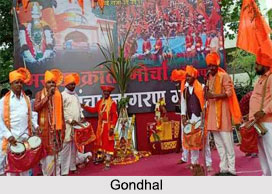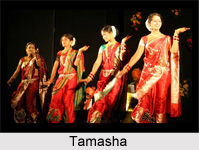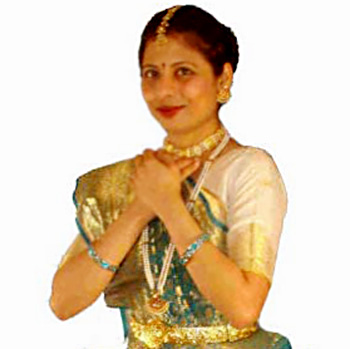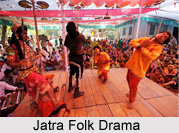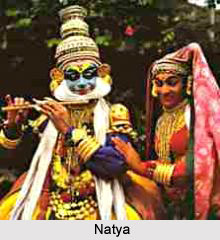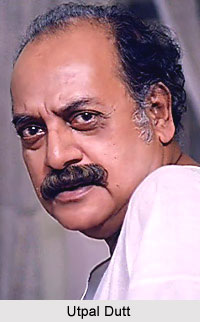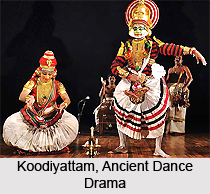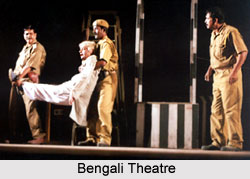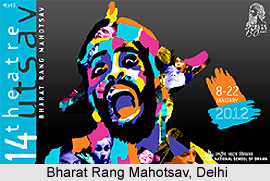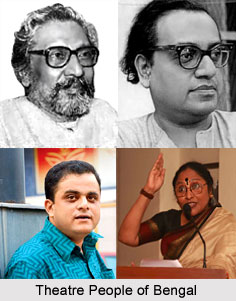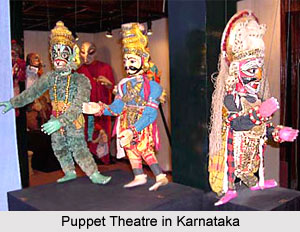 Puppet theatre in Karnataka is one of the popular forms of folk theatre in the state. It is human tendency both to imitate and to be pleased to get imitated; the result of the latter is the entertaining performances of the Kale Basava the trained bull, the monkey charmer, the bear player and the like, which are still seen in the villages all over Karnataka. Not satisfied with the standard of the animal`s imitation of man, the artist with a keen sense of drama, created the puppet which held the stage from ancient times.
Puppet theatre in Karnataka is one of the popular forms of folk theatre in the state. It is human tendency both to imitate and to be pleased to get imitated; the result of the latter is the entertaining performances of the Kale Basava the trained bull, the monkey charmer, the bear player and the like, which are still seen in the villages all over Karnataka. Not satisfied with the standard of the animal`s imitation of man, the artist with a keen sense of drama, created the puppet which held the stage from ancient times.
Origin of Puppet Theatre in Karnataka
The origin of the puppet is traced to the coastal tract of Karnataka, and even now, a number of puppets are placed in the temple car and in the age old Bhutashanada Bandi which are drawn in procession on festive occasions. The puppet is called Sutrada Bombe and Gombeyata in Karnataka and bears literary references from early times. Kanakadasa and his contemporary Purandaradasa of the early 16th century have drawn analogies to the puppet in their compositions. Inscriptions, one of 1470 A. D. and the other of 1521 A. D. clearly indicate the popularity of the puppet at the times of Vijayanagar Empire. These evidences indicate the existence of the puppet in ancient Karnataka.
The puppetteer is literally a Sutradhara, for he controls the movements and actions of the puppet with threads tied to their movable limbs. He also supplies words and songs to his decorated dolls made of wood and significantly dressed in colourful costumes to represent mythological characters. Hands, feet, head, fingers and even the lips of the doll are moved by means of pulling strings or black threads (sutra) to synchronise with the spoken word. Often, the puppets are made to perform some folk dances with flawless rhythm. All this calls for a meticulous training and practice on the part of the puppetteer, who, with threads held in both hands, often bound to wrists and sometimes held between teeth, engineers his miniatures into effective human movement and expressions. He usually possesses a grand sense of the drama and is an intelligent ventriloquist supplying words in varying voices to different puppets. Once the balance and synchrony is achieved between the spoken-word and action, the puppet becomes a living being, capable of realistic and delicate movements, full of intense action and emotion.
When such efficiency is achieved, the audience forget themselves for hours under the spell of the puppet and so, the male and female, child and adult, high brow and low brow, rich and poor all fall for its charms. As obtained in recent times, the puppet-show in Karnataka, in its dance, music, themes, manner of talking and procedure of showmanship closely resembles Yaksagana and Doddata. Themes are usually drawn from the Ramayana and Mahabharata. The composition itself is in poetry, which will be interpreted in prose during the performance. Some of the most popular shows that held the stage were Vatsala Harana, Sri Krishna Sandhana, Krishna Arjun Yuddha, Subhadrakalyana and Ravana Samhara. There would often be as many as ten puppets (manipulated by four or five persons) at the same time on the stage and the show would normally run for three to four hours. In order to bring about the effect of an illusion, the stage for the puppet is so devised that the manipulator is concealed behind a drop curtain. In the foreground are the puppets, each about two feet tall and significantly dressed. They perform histrionic miracles, usually shown in the rather dim light. It is behind the curtain or at one end of the platform; the Bhagavata will be seated with the musical accompaniments - Puhgi or Mukha Veena, Mridanga and the Dhol. The puppetteer does all the talking and he .sings also with the Bhagavata; synchronising the song with the dance and movement of the puppet.
The puppet shows occupied the stage for years as one of the most popular modes of the folk theatre of Karnataka. No festival or jatra would be complete without it. The art of the puppet was the monopoly of learned Brahmins in North Karnataka and usually, their families took their names after the puppet as the Gombe family.
